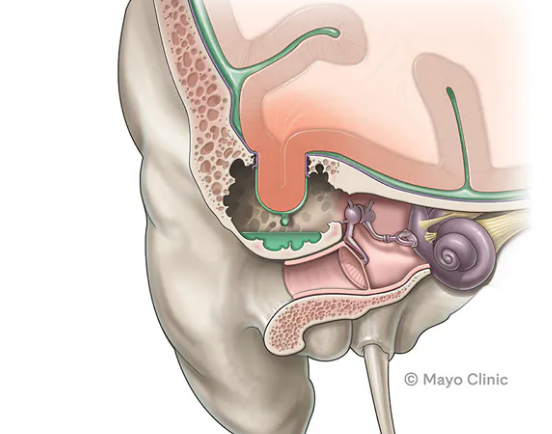The convergence of artificial intelligence (AI) and neurosurgery is rapidly transforming the medical landscape. By embedding AI into neurosurgical tools and procedures, surgeons can achieve unprecedented precision, speed, and predictive capabilities. This synergy is not only enhancing the efficacy of brain and spine surgeries but also shaping a safer, more data-driven future in healthcare.
The Role of AI in Modern Neurosurgery
AI, powered by machine learning algorithms and vast medical datasets, is becoming a cornerstone in diagnosing, planning, and executing neurosurgical procedures. From analyzing complex brain imaging to predicting surgical outcomes, AI technologies are aiding neurosurgeons in making faster and more accurate decisions.
One of the most significant benefits of AI integration in neurosurgery is its ability to process and interpret large volumes of medical imaging data. AI-driven platforms can rapidly detect abnormalities in MRI or CT scans that might be missed by the human eye, enabling early diagnosis and timely intervention.
Enhancing Surgical Precision with Robotics and AI
Robotic-assisted surgeries have already proven their value in various medical disciplines. In neurosurgery, these systems are elevated by AI, offering highly precise and minimally invasive solutions. AI-powered surgical robots can perform repetitive or delicate tasks with extreme accuracy, reducing the likelihood of human error and shortening recovery times.
For instance, during spinal surgery, AI algorithms can guide robotic arms to make incisions and place implants with micrometric precision. These tools adjust in real-time, adapting to patient-specific anatomy and intraoperative changes. The result is a dramatic improvement in procedural accuracy and patient outcomes.
AI in Preoperative Planning and Decision-Making
Before a surgeon enters the operating room, AI is already at work. Machine learning models are now used to create detailed simulations of neurosurgical procedures, allowing doctors to map out the best surgical routes, anticipate potential complications, and personalize strategies for individual patients.
These AI-driven simulations incorporate patient history, anatomical data, and pathology to provide comprehensive preoperative insights. The technology significantly enhances surgical planning by reducing guesswork and enabling personalized approaches for each case.
Intraoperative Intelligence: Real-Time Data and Monitoring
AI doesn’t just help before surgery—it plays a critical role during operations as well. Real-time data analytics, powered by AI, allow surgeons to receive instant feedback during procedures. For example, AI-integrated systems can continuously monitor vital signs, brain wave patterns, and tissue responses, alerting the surgical team to any anomalies.
Additionally, augmented reality (AR) combined with AI can overlay digital information directly onto a surgeon’s field of vision. This fusion gives surgeons enhanced visibility into patient anatomy and improves navigation during complex surgeries.
Postoperative Care and Predictive Analytics
The benefits of AI extend well into the postoperative phase. Predictive analytics tools assess patient recovery data to foresee complications, recommend interventions, and optimize rehabilitation plans. These systems help clinicians monitor patients remotely and detect warning signs before they escalate into serious issues.
AI applications are also instrumental in long-term patient care. By analyzing patterns in recovery and comparing them across patient populations, AI can offer insights into the most effective treatments and therapies for future patients.
AI-Powered Imaging and Diagnostics in Neurosurgery
Medical imaging plays a pivotal role in neurosurgery, and AI is elevating its potential. Deep learning models trained on thousands of brain scans can identify tumors, hemorrhages, or lesions with a high degree of accuracy. These models not only accelerate diagnosis but also reduce the variability that often arises with human interpretation.
AI is also enabling functional imaging, where it helps map brain activity and determine critical areas for speech, movement, or memory. This information is vital when performing surgeries near sensitive brain regions, minimizing the risk of cognitive impairment post-surgery.
Ethical and Regulatory Considerations
As AI becomes more embedded in neurosurgical practice, ethical and regulatory questions have emerged. Issues around data privacy, algorithmic transparency, and clinical accountability must be addressed to ensure safe and equitable use of these technologies.
Healthcare providers and regulators are working to create guidelines and standards for AI integration. Ensuring that AI tools undergo rigorous validation and are used as decision-support rather than decision-making systems will help maintain the highest standards of patient safety.
Training Neurosurgeons in the Age of AI
The rise of AI in neurosurgery demands a shift in medical education. Future neurosurgeons must be trained not only in surgical techniques but also in data interpretation, AI tools, and machine learning principles. Simulation-based learning, AI-enhanced virtual reality platforms, and digital case reviews are becoming integral parts of neurosurgical training.
By equipping surgeons with the skills to leverage AI, the next generation of neurosurgical professionals will be better prepared to navigate the complexities of modern medicine.
The Future: Personalized Neurosurgery Through AI
The ultimate goal of integrating AI with neurosurgical tools is to deliver truly personalized medicine. As AI continues to evolve, it will enable more accurate predictions of surgical outcomes, tailor-made treatment plans, and continuous improvement through feedback loops.
In the near future, we can expect AI to assist in the development of fully autonomous surgical systems, capable of performing certain procedures under human supervision. These advancements will significantly expand access to high-quality neurosurgical care, especially in underserved regions.
Conclusion: Embracing the AI Revolution in Neurosurgery
The integration of AI with neurosurgical tools is not just a technological advancement—it’s a paradigm shift. With enhanced precision, improved diagnostics, personalized treatment, and better patient outcomes, AI is redefining what’s possible in brain and spinal surgery.
While challenges remain in terms of ethics, training, and regulation, the trajectory is clear: AI is set to become an indispensable ally in the operating room. As we continue to harness its power, the future of neurosurgery will be one of greater accuracy, efficiency, and hope for patients worldwide.
Also Read :
